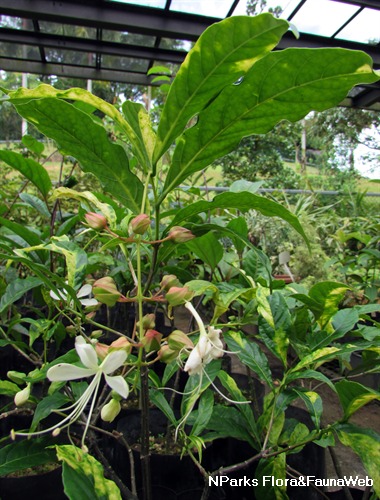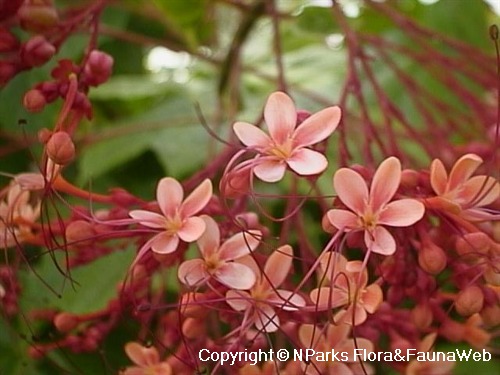
Back
Clerodendrum paniculatum L.
| Family Name: | Lamiaceae (Labiatae) |
| Synonyms: | Clerodendrum citrinum, Cleianthus coccineus, Clerodendrum diversifolium, Clerodendrum paniculatum var. diversifolium, Clerodendrum pyramidale, Volkameria angulata, Volkameria diversifolia |
| Common Name: | Pagoda Flower, Pangil-pangil, 圆锥大青 |
Pagoda Flower (Clerodendrum paniculatum) has tall pyramid-like inflorescences that grows up to 45 cm tall and large glossy leaves. Growing up to 1.5 m tall, this shrub produces flowers which attract butterflies and sunbirds for nectar. It grows best under full sun on moderate water requirement on moist, well-drained soils.
Name
Classifications and Characteristics
| Plant Division | Angiosperms (Flowering Seed Plants) (Dicotyledon) |
|---|---|
| Plant Growth Form | Shrub |
| Lifespan (in Singapore) | Perennial |
| Mode of Nutrition | Autotrophic |
| Plant Shape | Shrubby |
| Maximum Height | 1 m to 1.5 m |
Biogeography
| Native Distribution | Assam to Vietnam to New Guinea. |
|---|---|
| Native Habitat | Terrestrial |
| Preferred Climate Zone | Tropical |
| Local Conservation Status |
Description and Ethnobotany
| Growth Form | Evergreen woody shrub. |
|---|---|
| Foliage | Glossy, deep-veined leaves vary in shape from subcordate to orbicular to ovate (up to 30 cm wide) often having 3 - 5 lobes. They have an opposite arrangement. The leaves emit an unpleasant fragrance. Leaf blade has cordate base, apex acute, margin entire to minutely denticulate. |
| Stems | Stem and branches hollow, slightly pubescent, 4-angled, slightly hairy. Branchlets are subglabrous to pubescent. |
| Flowers | Pink, orange-red or red, bisexual, unscented tubular flowers (1.5 cm wide) occur in terminal panicles shaped like Chinese pagodas (up to 45 cm in height). Stamens and style extend well beyond the petals, since they are 4 times longer. In the tropics, this species blooms throughout most of the year. Flowers last for several weeks on the plant. |
| Fruit | Spherical fruits about 1 cm in diameter are classified as drupes. Fruits are rarely seen in cultivated plants. |
| Habitat | Occurs in tropical open forests, grassy marshes, forest edges and stream banks. |
| Cultivation | Plant can be propagated vegetatively via cuttings and suckers. This species is easy to maintain. Protect the plant from very intense sunlight and strong winds. Plant them 2.5 - 3 m apart in slightly acidic soil that is rich in humus and has good drainage. Cultivated plants rarely produce fruit. This plant is fast-growing and aggressive, so restrain its growth by removing the suckers and hard pruning after blooming. |
| Etymology | Genus epithet Clerodendrum is from the Greek word "kleros" which means chance and "dendron" meaning a tree. The species epithetpaniculatum refers to the arrangement of flowers in terminal panicles. |
| Ethnobotanical Uses | Medicinal: Traditional Medicinal Uses In Indonesia, the plant is used in treating sore eyes. In some other countries such as India, China and Japan, the plant is used traditionally for treating rheumatism, ulcer, neuralgia, typhoid, anemia, liver complaints, purification of blood, inflammation, and wounds <1>. It is important to note that some therapeutic effects from traditional medicinal uses of plants are not currently supported or verified by scientific research. Cultural / Religious: Various magical attributes have been recorded. In Malaysia, some people believe that the plant has magical powers to attract spirits, and thus the Malay vernacular name Pangil-pangil. |
Landscaping Features
| Landscaping | Often planted in tropical gardens, because of their large, showy inflorescences. It is attractive when planted as part of a mixed border. Planting several individuals together creates a stunning display of color. This species produces nectar which attracts butterflies and sunbirds. |
|---|---|
| Desirable Plant Features | Ornamental Flowers |
| Landscape Uses | Flowerbed / Border, Parks & Gardens, Small Gardens |
| Thematic Landscaping | Bird & Wildlife Garden, Butterfly Garden |
Fauna, Pollination and Dispersal
| Fauna Pollination Dispersal Associated Fauna | Butterfly-Attracting (Flower Nectar), Bird-Attracting (Flowers) |
|---|---|
| Pollination Method(s) | Biotic (Fauna) (Insects (Butterfly, Moth), Vertebrates (Bird)) |
| Seed or Spore Dispersal | Biotic (Fauna) |
Plant Care and Propagation
| Light Preference | Full Sun |
|---|---|
| Water Preference | Moderate Water |
| Plant Growth Rate | Fast |
| Rootzone Tolerance | Drought Tolerant, Moist Soils, Well-Drained Soils |
| Potential Problems | Plants grow fast. Plants can be controlled by removing the suckers to avoid spreading. |
| Diseases | No known diseases affecting the plant. |
| Pest(s) | Sucking Insects |
| Propagation Method | Stem Cutting, Root Cutting, Seed, Sucker, Air-Layering |
| Propagation Method Remarks | Replant the suckers that grow near the base of a mature plant. Can also propagate by seed, air-layering and root or stem cuttings. |
| Planting Distance | 2.5 m to 3 m |
Foliar
| Foliage Retention | Evergreen |
|---|---|
| Mature Foliage Colour(s) | Green |
| Leaf Area Index (LAI) for Green Plot Ratio | 4.5 (Shrub & Groundcover - Dicot) |
Floral (Angiosperm)
| Flower Colour(s) | Red |
|---|
References
| References | <1> Prashith Kekuda T.R & Sudharshan S.J (2018). Ethnobotanical uses, phytochemistry and biological activities of Clerodendrum paniculatum L. (Lamiaceae), A comprehensive review, Journal of Drug Delivery and Therapeutics, 8(5): 28- 34. |
|---|
Image Repository
Others
| Master ID | 530 |
|---|---|
| Species ID | 1826 |
| Flora Disclaimer | The information in this website has been compiled from reliable sources, such as reference works on medicinal plants. It is not a substitute for medical advice or treatment and NParks does not purport to provide any medical advice. Readers should always consult his/her physician before using or consuming a plant for medicinal purposes. |

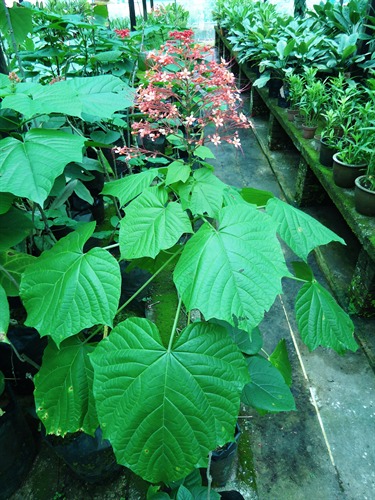
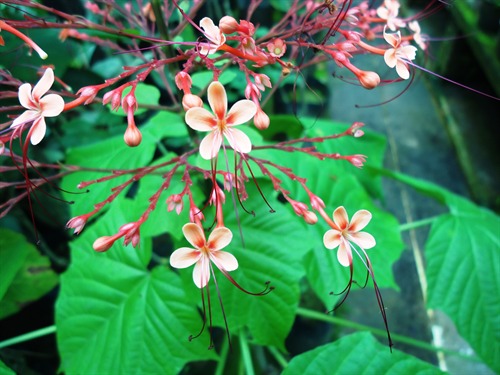
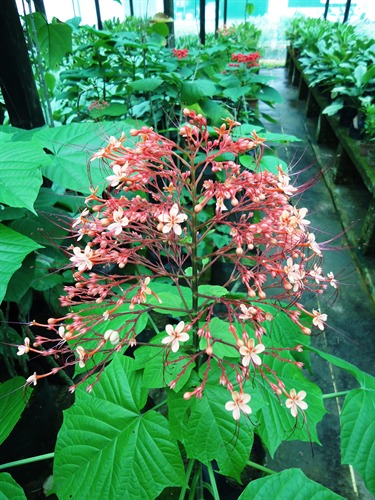
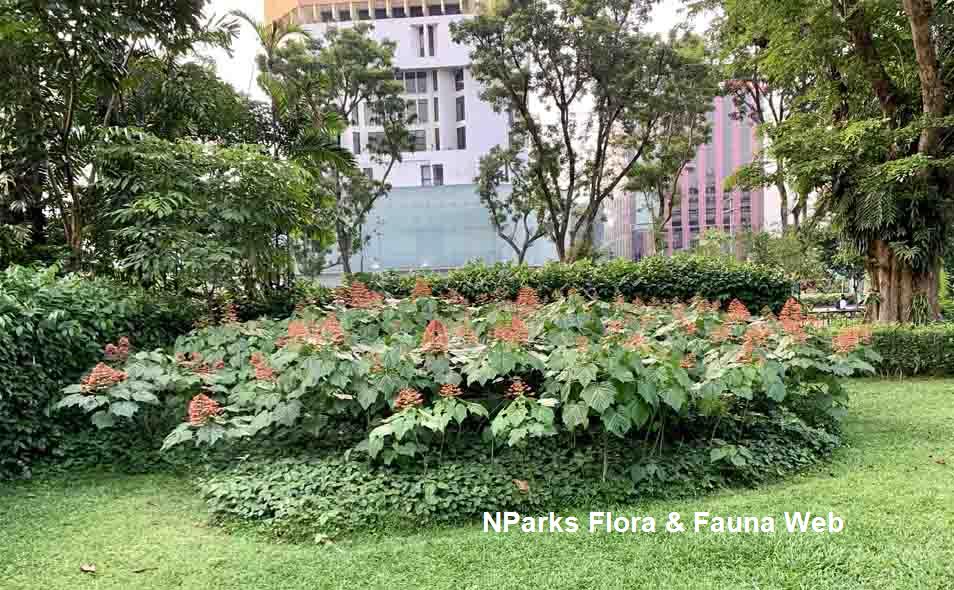
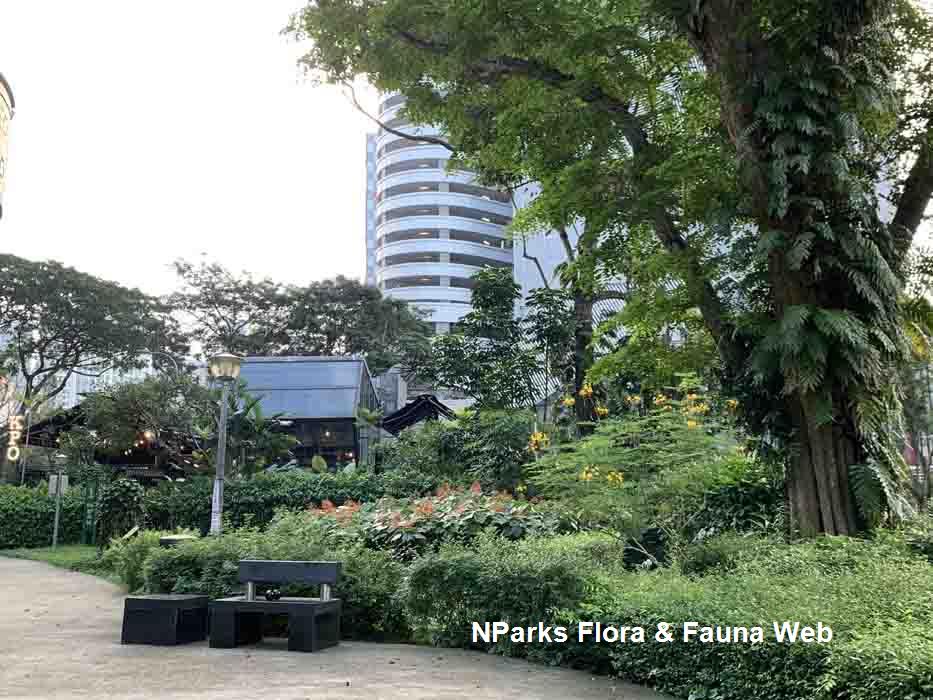

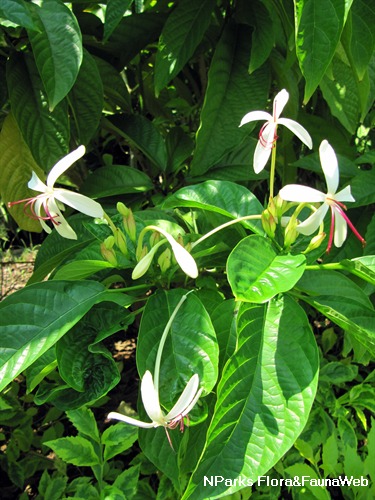
.jpg)
